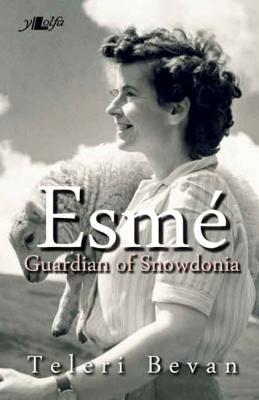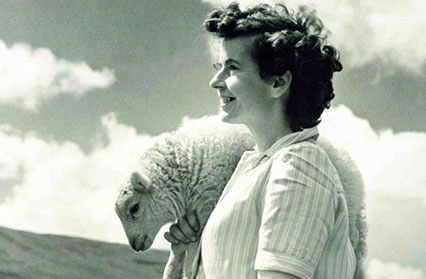Y Lolfa, 160pages, £9.95
Tho mas Firbank’s I Bought a Mountain (1940) is the best-selling account of his spell as a sheep farmer in Snowdonia. It is an unlikely and fascinating story.
mas Firbank’s I Bought a Mountain (1940) is the best-selling account of his spell as a sheep farmer in Snowdonia. It is an unlikely and fascinating story.
In 1931, the 21-year-old Firbank, just arrived from Canada and with no farming experience, bought a 2,400 acre farm near Capel Curig. I Bought a Mountain tells of what Firbank describes as his journey from ignorant outsider to respected member of the farming community. The book is full of breezy tales of Firbank’s escapades, both on and away from the farm. The awe-inspiring landscape is wonderfully described. The tension between ‘development’ and the valley’s tranquillity is nicely explored. It is a very good book, no doubt.
However, it is not an entirely satisfying one. It is very much Firbank’s own tale and (sometimes superior) take on things, with the local farmers – including the author’s own shepherds – rarely more than bit-part players. And Firbank’s wife, Esme, while lovingly portrayed, is often in the background or being gently patronised for her ‘Ideas’, surprising strength or surprising determination. Many readers will finish I Bought a Mountain wanting to know more about those around Firbank during his years on the hills.
Teleri Bevan’s Esme: Guardian of Snowdonia has now placed the background heroine of Firbank’s story where she belongs: front and centre. And Esme’s story is an important one to tell, so this is a welcome book, even if it is a somewhat dry one.
‘Esme was born to be centre stage’, Bevan tells us at the book’s beginning, before giving details of Esme’s early life at boarding school and her acting ambitions. Esme, born in Surrey, moved to Deganwy as a child. In 1934, Esme and Thomas, both aged 23, married. Their marriage came to an end around the start of World War II. Thomas would fight in the war (recounted in I Bought a Star). He then moved to Japan.
However, Esme would stay on the farm (being joined by her second husband, Major Peter Kirby). She remained there for the rest of her life, not just running the farm but becoming a renowned campaigner for the protection of the local landscape. She founded the Snowdonia National Park Society, a quasi-watchdog. And she led a campaign to re-establish colonies of the red squirrel on Anglesey.
Bevan’s book runs through the details of Esme’s life in functional fashion, largely focused on detailing chronologically what happened when. The storytelling could do with being a bit looser, with more words given to Esme going about her everyday business, particularly her times out on the farm and the hills.
Bevan tells how Esme learned to look after the farm following Firbank’s departure. Esme’s ambition was ‘to make Dyffryn the best hill farm in Wales.’ She was always exploring new opportunities to make the farm viable in the tough economic times of the post-war period. In particular, Bevan provides detail on the harsh winter of 1947, when about a quarter of the sheep in Snowdonia perished.
Bevan neatly charts Snowdonia’s expanding tourist trade and man-made developments, such as the building of Trawsfynydd nuclear power station, ‘upgrades’ to the Cwm Dyli power station & pipeline, and the defeated plans for a youth hostel on the Glyder mountains. It was Esme’s interest in the landscape’s protection from such structures that led her to set up the Snowdonia National Park Society (formed 1967).
Bevan goes into detail – perhaps too much detail – about various members of staff and the internal politics of the Snowdonia Society (as it is now known).
Esme Kirby was eventually ousted from her own organisation. Bevan says of Esme, ‘when she spoke, people listened’. Her forthright nature did not endear her to everyone, even those ostensibly on her side. Bevan herself says that despite all her successes Esme was ‘respected but not necessarily revered’. Various campaign victories, losses and disagreements are recounted by Bevan, many not showing Esme in a wholly positive light but all of them showing her sense of leadership and her passion for Snowdonia.
Ultimately, Esme: Guardian of Snowdonia doesn’t lay bare the essential character of its subject. But it is a good run-through of her campaigning life. And through it, we can trace the story of hill-farming and Snowdonia through the decades.
Both books have their faults, and the books are very different, but I Bought a Mountain and Esme: Guardian of Snowdonia prove interesting companion pieces. Both are certainly worth reading by those that care for our hills.
Note
Esme Kirby died in 1999. She was buried at her Dyffryn Mymbyr farm in a plot near the sheep pens on Glyder Fach.











